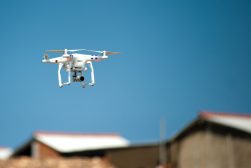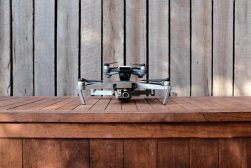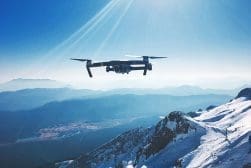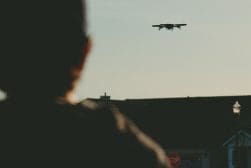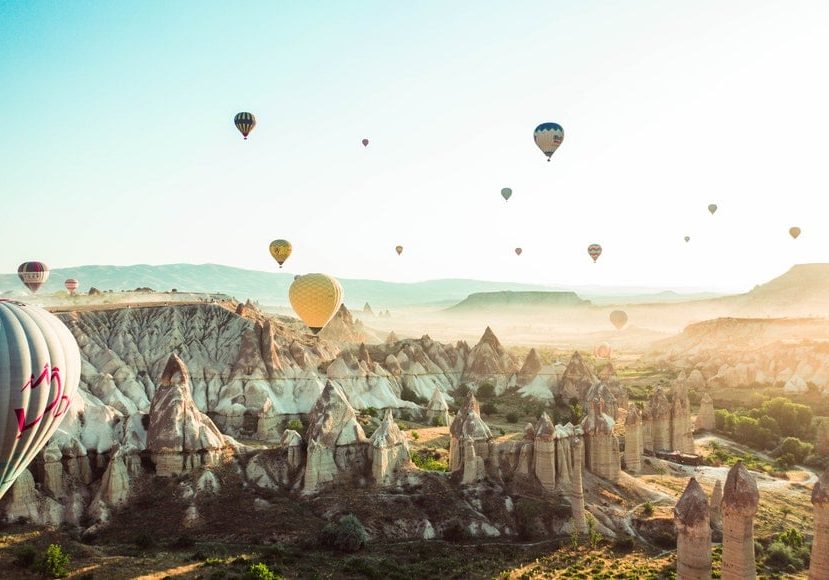
How to Capture Breathtaking Aerial Photography
Don't own your own helicopter?! Don't worry - you can still get incredible aerial photography by following these tips. Check out our guide for some inspiration!
Learn | Photography Guides | By Ana Mireles
Are you interested in trying aerial photography? This guide should have all you need to get started.
Whether you want to fly a drone or get on an aircraft, you’ll find all the most common types of aerial photography right here that you can try and how you can do them.
Using an aerial perspective is a sure way to get creative with your camera shots and angles with film and photography.
From tips about the best gear to planning your first flight… let’s get started.
What is Aerial Photography?
Aerial photography refers to images obtained while flying – specifically looking towards the ground. In other words, if you take photos with an aerial view of a specific location, you’re doing aerial photography.
However, if you take the photos from the same position but focus on another aircraft passing by, you’re not doing aerial photography. Instead, you’re doing air-to-air photography.
What are the Types of Aerial Photography?
Aerial photographs can be categorised using two parameters – one is the scale, and the second is the camera axis’s position.
Types of aerial photography based on the scale:
- Large scale – this is also known as low altitude aerial photography because you need to be flying closer to the surface to capture the subject at a larger scale.
- Small scale – when you’re at a higher altitude, everything looks smaller compared to the ground area – this is known as small scale photography.
Types of aerial photography based on the camera axis:
- Vertical photography – this is when you’re looking straight down at the earth’s surface without tilting the axis.
- Low oblique photography – when you tilt your camera to a small degree, but it’s not enough to see the horizon, then it’s called low oblique.
- High oblique photography – once you see the horizon, usually meaning that you have more than a 60-degrees tilt, then it’s a high oblique photograph.
What are the Uses of Aerial Photography?
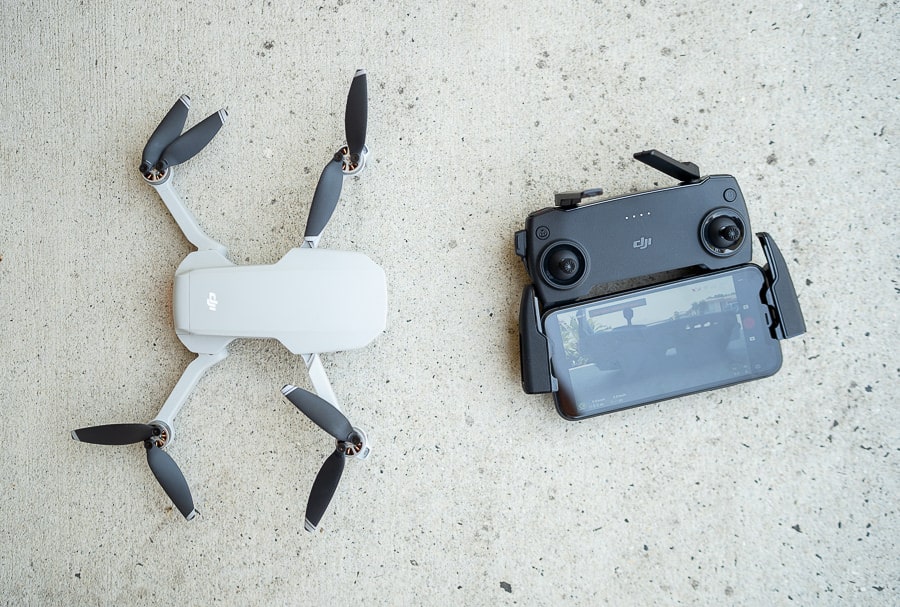
DJI Mavic Mini
Aerial images have an enormous range of applications, from technical to artistic.
Since the popularisation of cheap drones, aerial images have gained a lot of demand for events such as concerts or weddings. They also became more common in landscape photography, not only for professional prints but also for recreational purposes.
Aerial photograph is also used for commercial purposes such as advertising campaigns and real estate to showcase rent or sale locations.
However, beyond the realm of creativity, it has many uses that actually date from before it was available to the average photographer.
The military and other government institutions have used this type of imagery to make maps or design a mapping project for land use planning. They’re also used for surveillance as well as emergency and disaster control.
Other types of institutions – both private and public – such as universities or research facilities also use this technology for environmental studies and even archaeological projects.
As you can see, it’s an essential tool in many fields, and it’s developed quickly as it’s needed for many uses beyond the arts.
How Do You Take Aerial Photography?
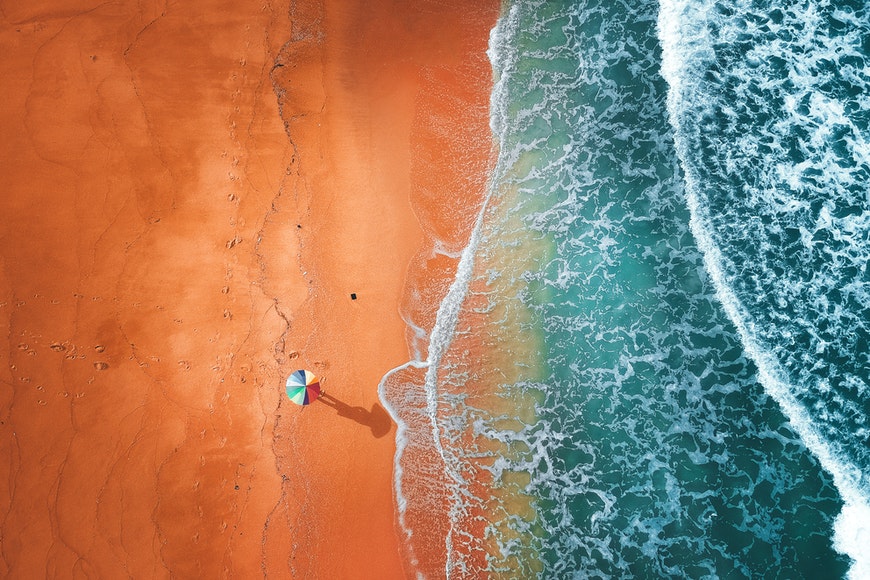
Credit: Pok Rie
If you think that only people with private airplanes can take aerial photographs – good news, there are many ways to do it, and some of them are very accessible.
- Use a camera drone – one of the most accessible ways to capture the world from an aerial point of view is to use drones. Obviously, the operation is remote – which may require some adjustment if you’re used to handling DSLRs or anything like that. On the plus side, you’ll be able to stand still to compose your images which is a great advantage. On the downside, you’ll need to make aerial images of close proximity because drones won’t fly as high as an airplane or other types of aircraft. Drones have become more affordable in recent years and are even made for kids.
- Use an action camera – this is another way to take images while flying, but it’s not for everyone. If you’re into extreme sports and you like parachuting, sky diving, etc., then you might as well use it to capture the amazing landscape you can see from up there.
- Photograph from a flying vehicle – Taking images from an aircraft is the most traditional way to do these types of photographs. Nadar is credited as the first photographer to go up in the air with the scope of taking pictures, and he used a hot air balloon. Today this is still a popular technique, but you can also do it from a plane, a helicopter, a dirigible, a blimp, a rocket, etc.
4 Tips for Aerial Photography
1. Pick the right gear

DJI Mavic Pro and camera gear of Justin Minns
If you’re wondering which camera is best for aerial photography, you first need to decide how you’re doing the photoshoot and what will be the final use of your pictures.
This is because you won’t have the same needs if you’re shooting from an off-doors helicopter as what you need if you’re jumping off a plane with a parachute.
It’s also different if you need to print an advertising campaign or you want to post on Instagram. So, let’s break it down.
How Much Do You REALLY Know About Photography?! 🤔
Test your photography knowledge with this quick quiz!
See how much you really know about photography...

If you’re going to shoot from an aircraft such as a plane or a helicopter – you can use a DSLR or a mirrorless camera. In this case, some of the important factors for aerial photographs are resolution, in-camera stabilisation and types of lenses – see below.
For drone photography, you should, of course, consider the camera specs but also some other features such as the range, the battery life and ease of use – if you’re new to using drones.
Finally, if you plan to take photos while doing air sports, you’ll need an action camera. Here you’ll also want to check battery life, mounting accessories, weight, durability, etc.
If you plan to take video, you’ll obviously need to consider the video resolution as well as the one for the photographs. Also, check if the image stabilisation and autofocus features are available during video shooting.
Finally, see if you can take stills while making a video or whether you would have to change from one mode to another.
If you’re using a DSLR or a mirrorless, the next question you’ll need to ask is: what is the best lens for aerial photography?
Paul Seibert – accomplished aerial photographer featured in the video above – recommends bringing a 24 – 70mm zoom lens.
This is because the 24mm focal length gives you a wide enough angle to capture a good landscape, for example, the entire island of Manhattan. Then, turning the zoom towards 70mm allows you to make good photographs of the buildings and landmarks as you get closer to them.
However, he does clarify that it’s best to bring two cameras with you. On one body, put a wide-angle zoom lens, like a 16 – 35mm and a telephoto zoom on the other body – such as a 70 – 200mm.
Whatever lens you decide to use, it should be the one that you stick with because it’s not recommended that you change the lens during the flight. Even on a closed airplane when it would be safe to change lenses, it’s not ideal because you’re constantly moving. You won’t be hovering on one spot – so whatever you miss while changing the lens is gone for good.
Another important piece of equipment is the strap – not only for action cameras but also on regular ones if you’re flying on a doorless helicopter or an open aircraft. You need to make sure that your gear is safely attached.
2. Regulations

Credit: Sergio Souza
Photography is getting more and more regulated as time goes by – from copyright laws to privacy laws. When you add flying to the equation, you need to be aware of a few more things.
You can’t fly over many areas for security reasons – or you can fly, but you can’t take pictures. This, of course, varies whether you’re planning on flying an airplane or flying a drone, so you need to be well informed to avoid getting into any trouble.
Obviously, flying an aircraft requires a special license and most people who photograph from planes or helicopters either have a permit or hire a pilot with a license. The same goes for air sports – you’re not very likely to jump from a parachute over a busy city.
However, things get more complicated when talking about drones because anybody can buy them, giving the impression that you can use them freely.
This definitely isn’t the case, though – the rules change in different parts of the world, and you might need licenses and permissions according to where you are and the type of drone you want to fly.
3. Plan according to weather and time of day

Credit: Invisible Power
One of the most common questions people have is: what is the right time for aerial photography?
While sunrise and sunset are beautiful and one of the most popular times – they’re not always easy for your first flight. The light conditions change quickly, and low light can be tricky to handle with most cameras.
Of course, in low light, it’s easier if you have a fast lens, good image stabilisation and a sensor that can handle higher ISO values without introducing much noise.
So, if you’re not an experienced photographer or don’t have powerful equipment with the specs I mentioned before, it’s best to choose an easier time.
Obviously, it depends on your subject and the type of image you want to get – if you want dramatic images, you shouldn’t choose a sunny, cloudless day.
An excellent way to choose the right time is to research your location. Look up on Instagram and other geotagged platforms when photographers fly the same area you want to capture.
Other websites and apps such as PhotoPills, GoogleMaps, Hover, AirMap, AccuWeather, Photographers Ephemeris etc., can help you plan the best routes and conditions.
Also, talk to the pilots – nobody will know the route, the light changes, and the weather conditions better than they do.
4. Taking pictures from a plane

Credit: Sterry Larson
What about if you’re not planning an aerial photo session and you just happen to be flying on a business trip or your holidays?
Well, it’s also possible to take a good photo from your window seat using your camera or your phone – especially during day time.
So, how do you take pictures on a plane?
First, clean the window as much as possible from any fingerprints or anything like that. Then, the most challenging part will be dealing with reflections – to lessen the problem, get the lens close to the window.
Should you touch the camera lens to the window when taking a photograph out of an airplane?
No, get as close as you can without actually touching the window – this way, you won’t be affected by the plane’s vibrations. What you can do is attach a rubber hood to your lens – there is no problem with this one touching the window, and this way, you’ll eliminate reflections.
Also, avoid using travel tripods because this too will make your camera vibrate – it will also limit your movements even more because of the small available space. Just use a fast shutter speed to avoid camera shake – to keep the ISO to the minimum possible, try to adjust the exposure using the aperture.
Once you know these things, it’s only a matter of timing and composition. Find a beautiful subject and choose the best moment to capture it.
Last but not least, make sure you’re not a nuisance to other passengers and follow any instructions and regulations told by the flight attendants – safety always comes first.
Final Words
I hope this article cleared some of your doubts and gave you the motivation to go out and start exploring the world from above.
If you have any questions about getting started, or you can give some advice and suggestions about the gear you use, the locations you prefer and any other tips – please share them in the comments section.

Check out these 8 essential tools to help you succeed as a professional photographer.
Includes limited-time discounts.





